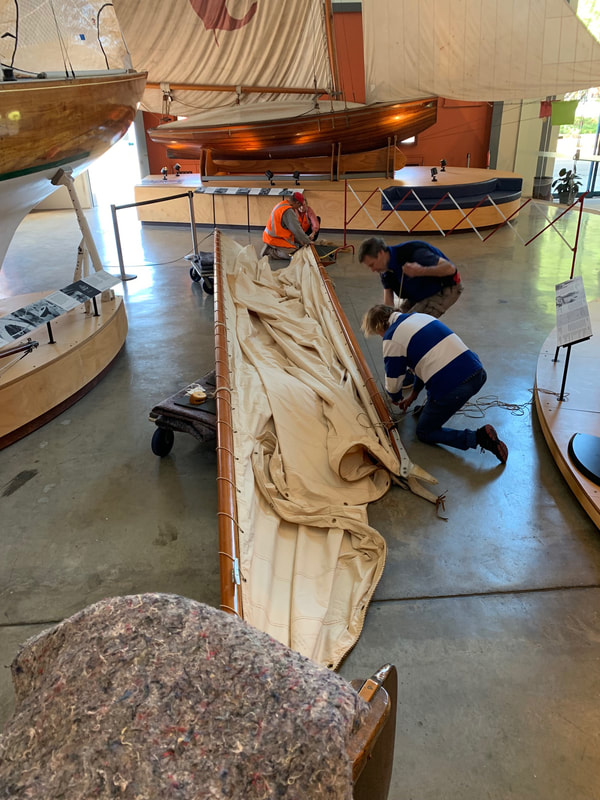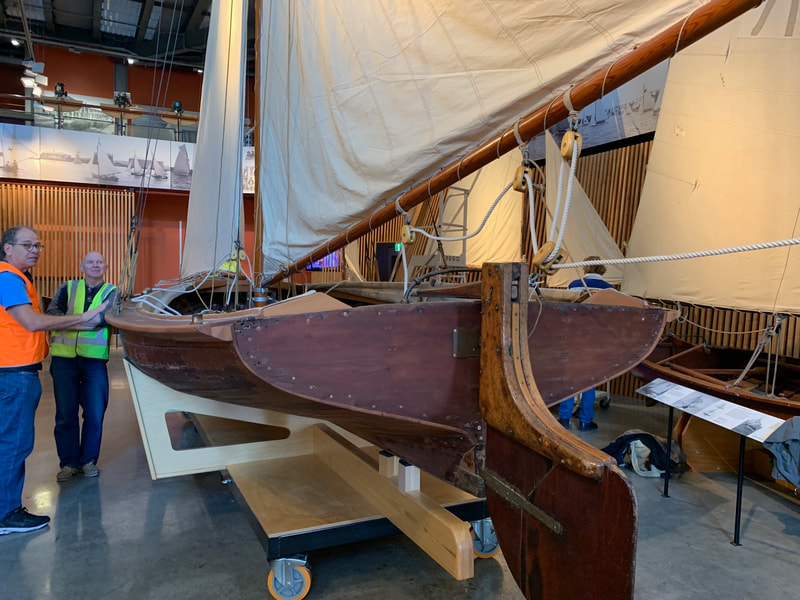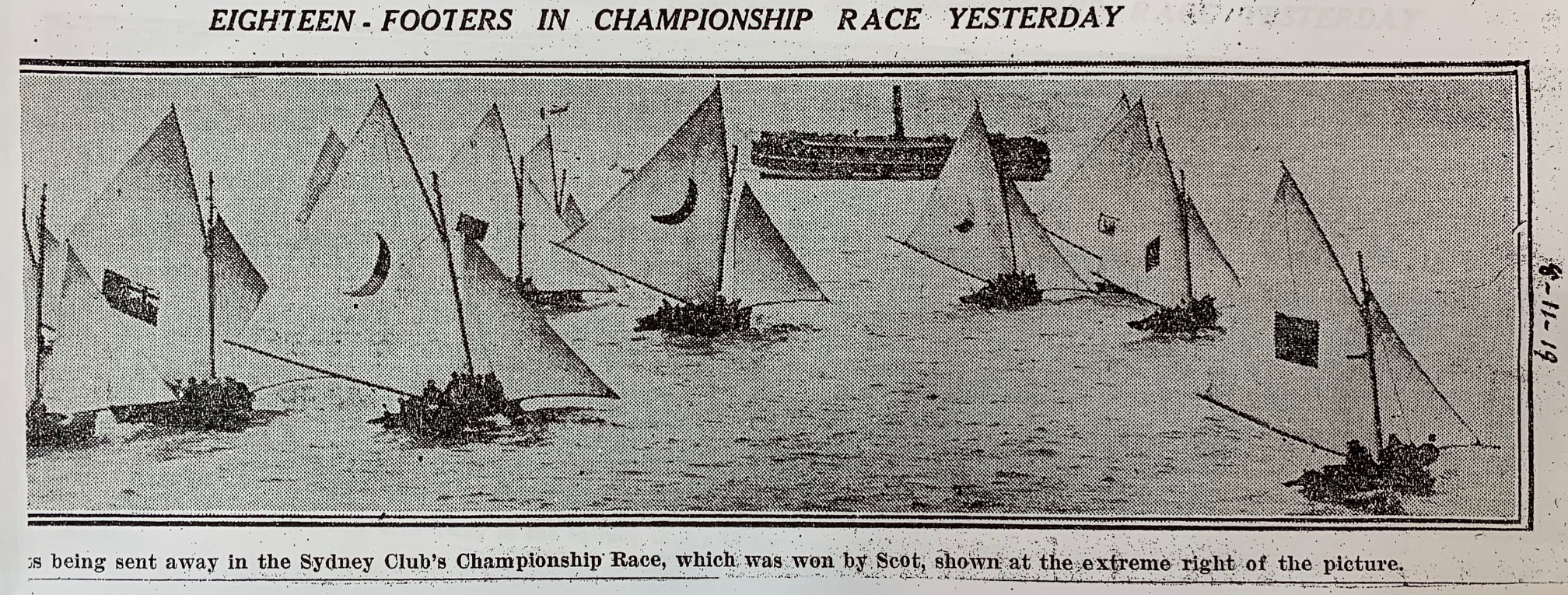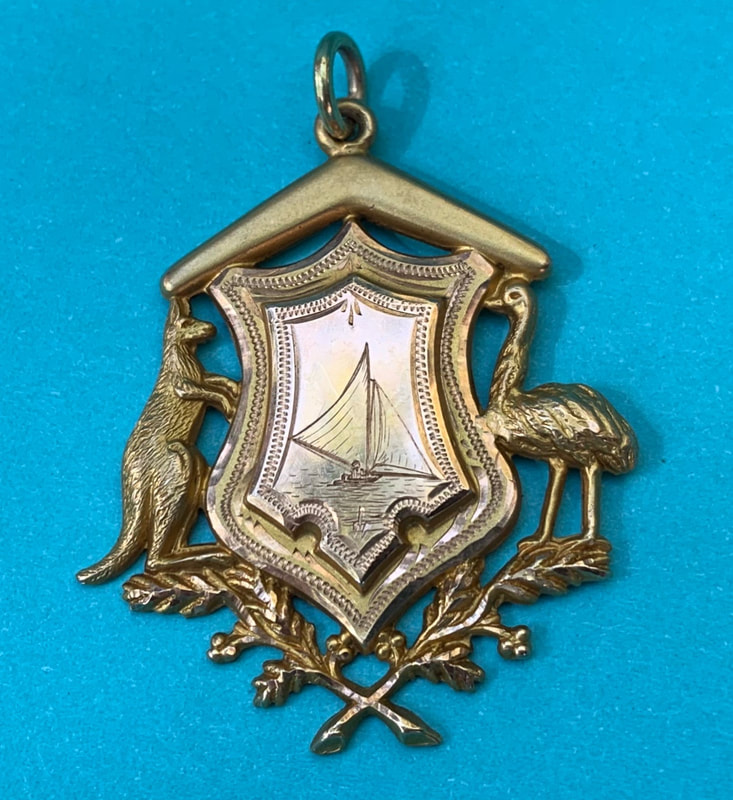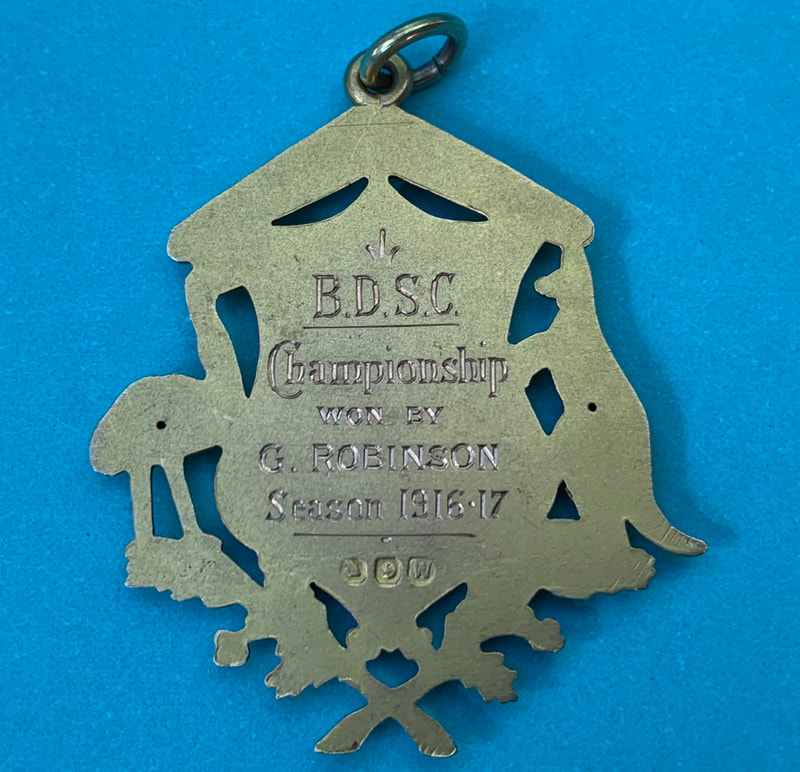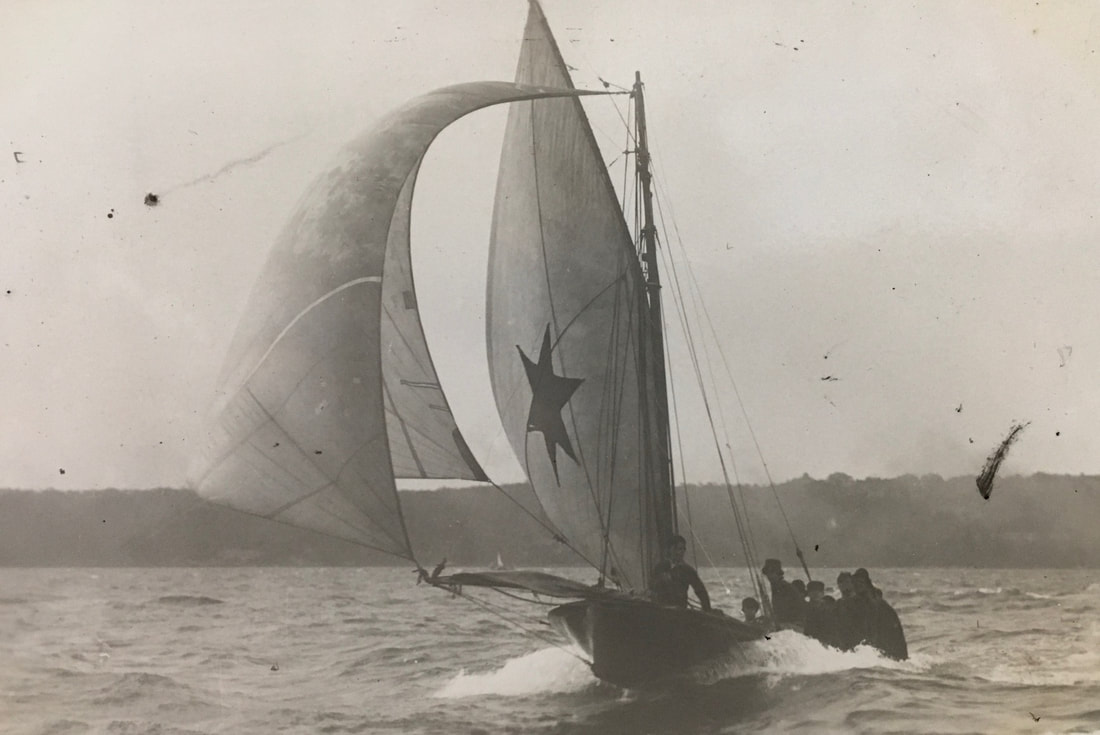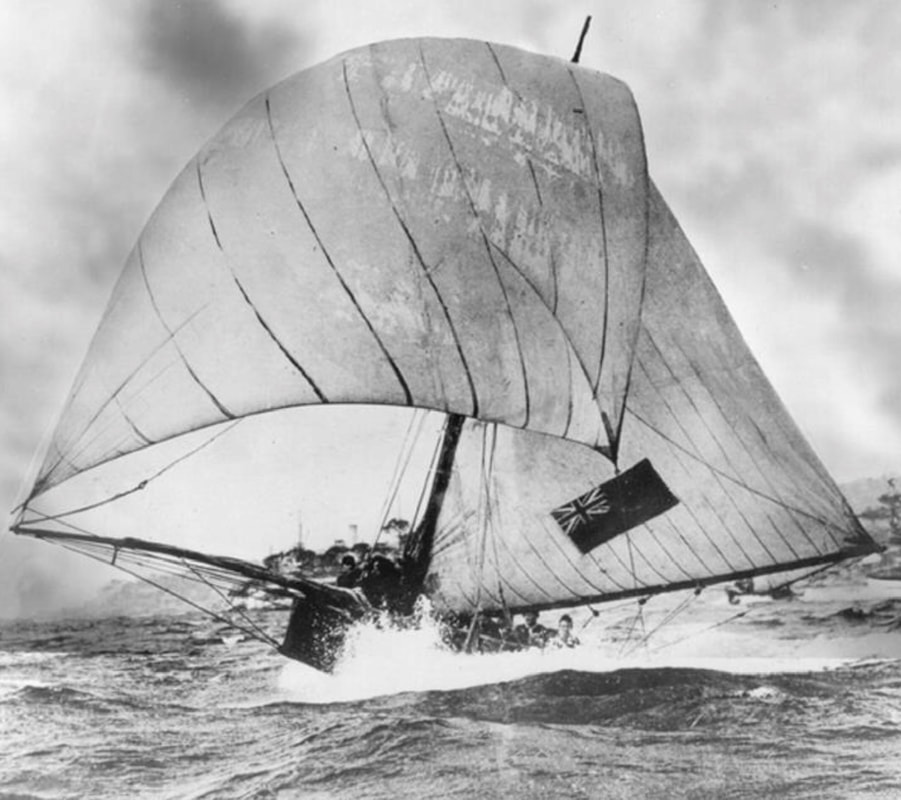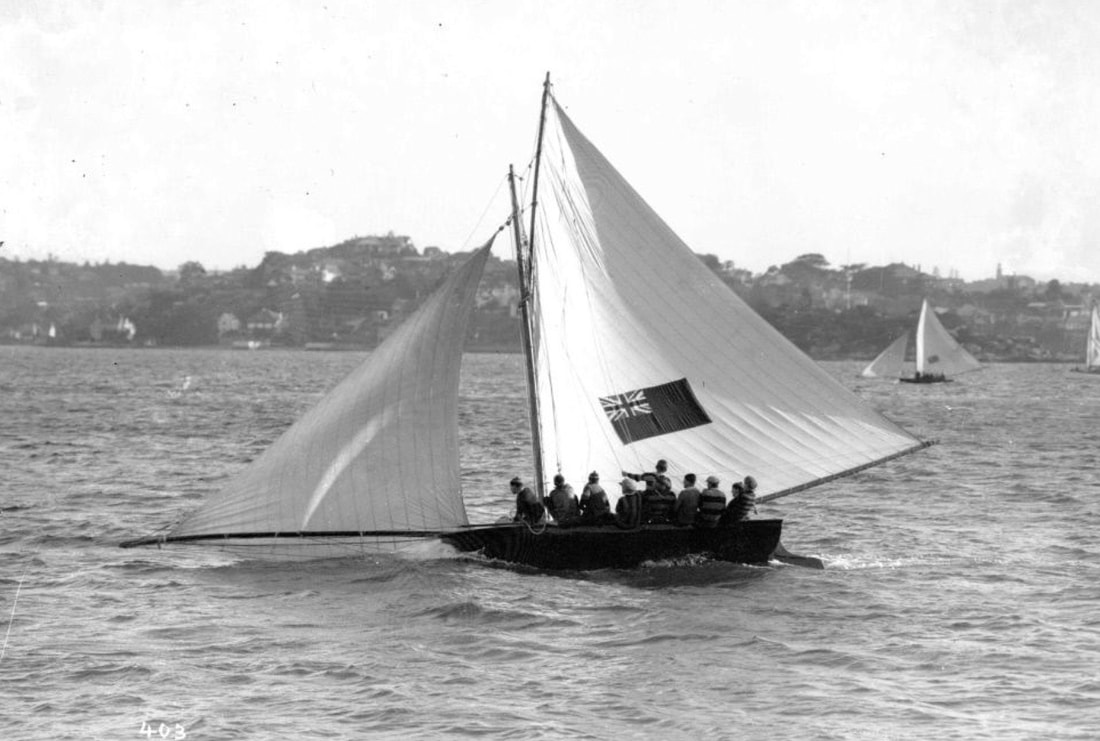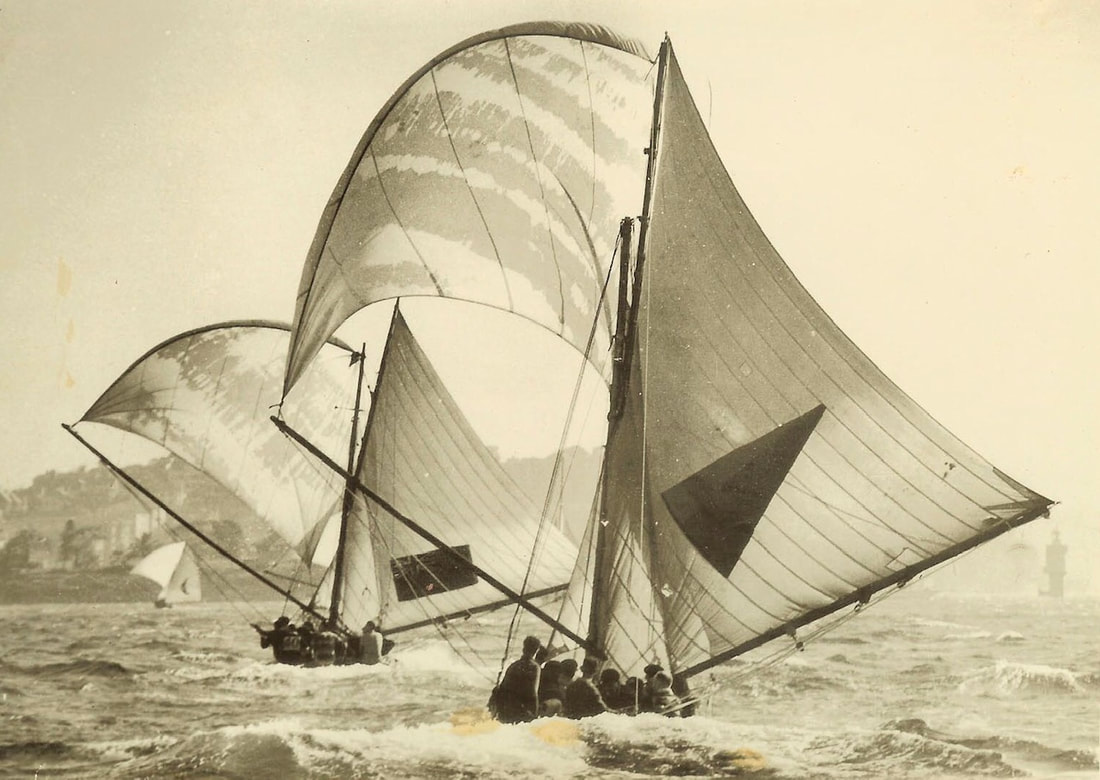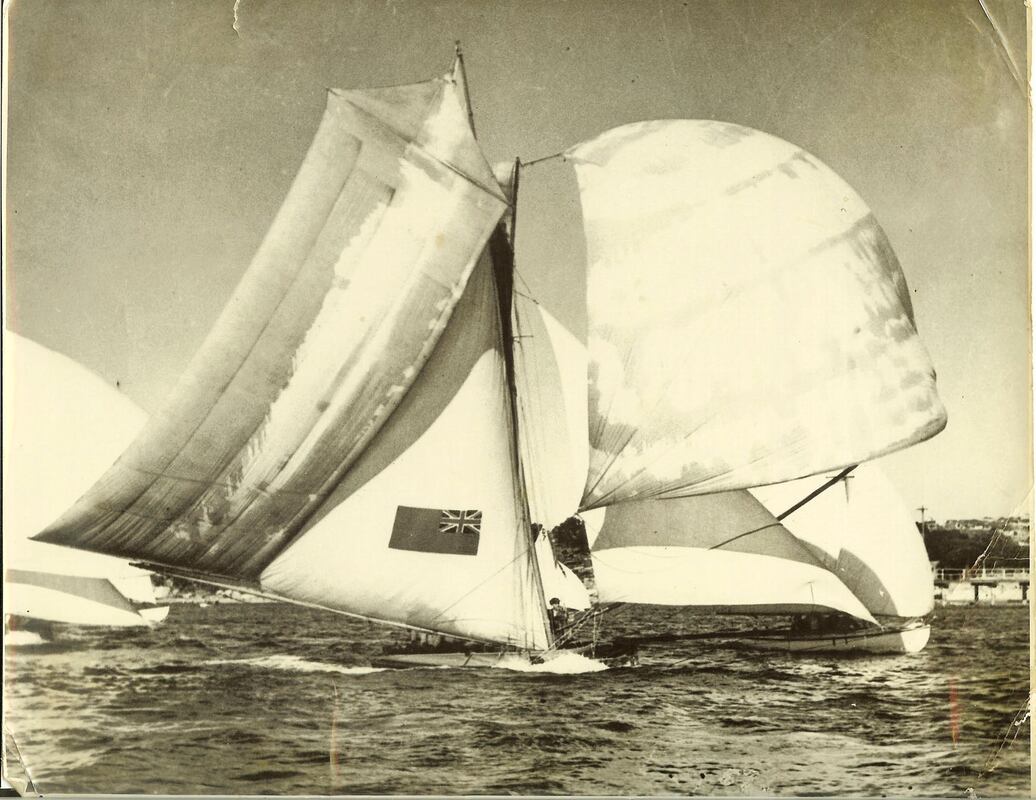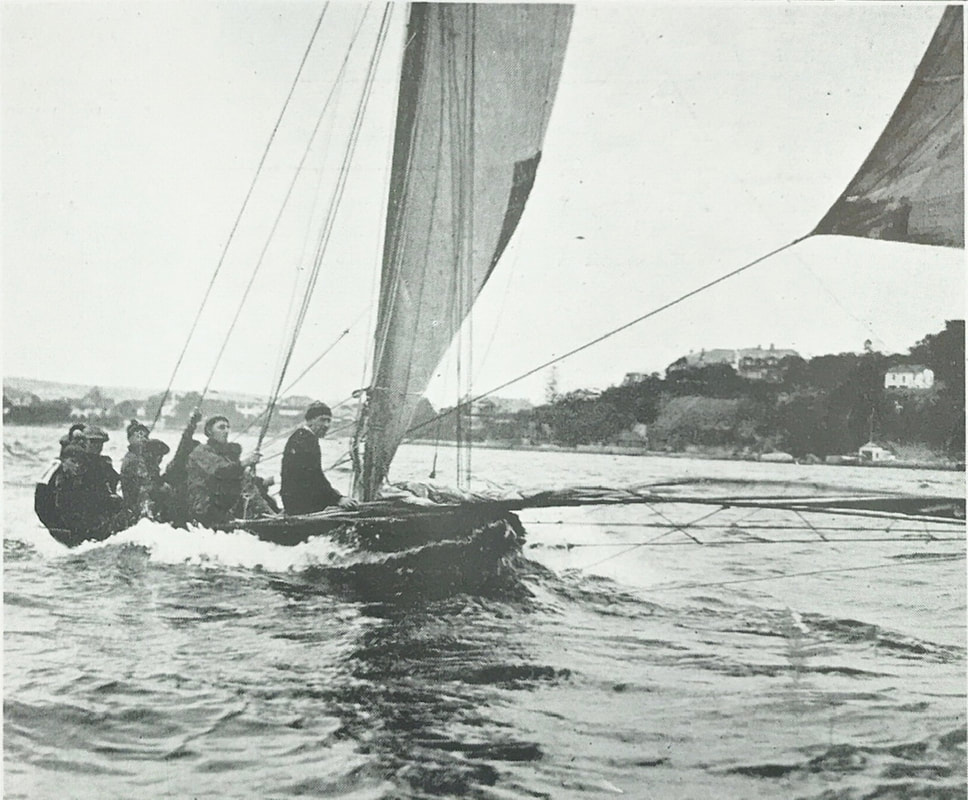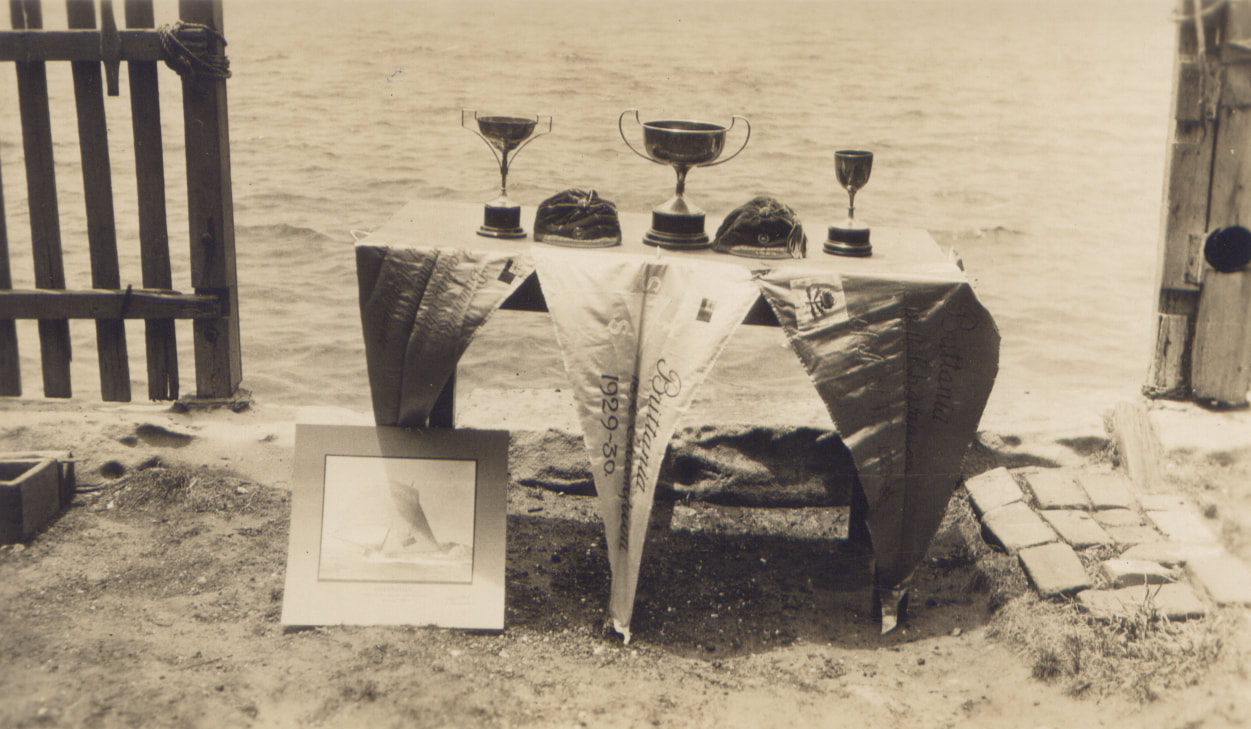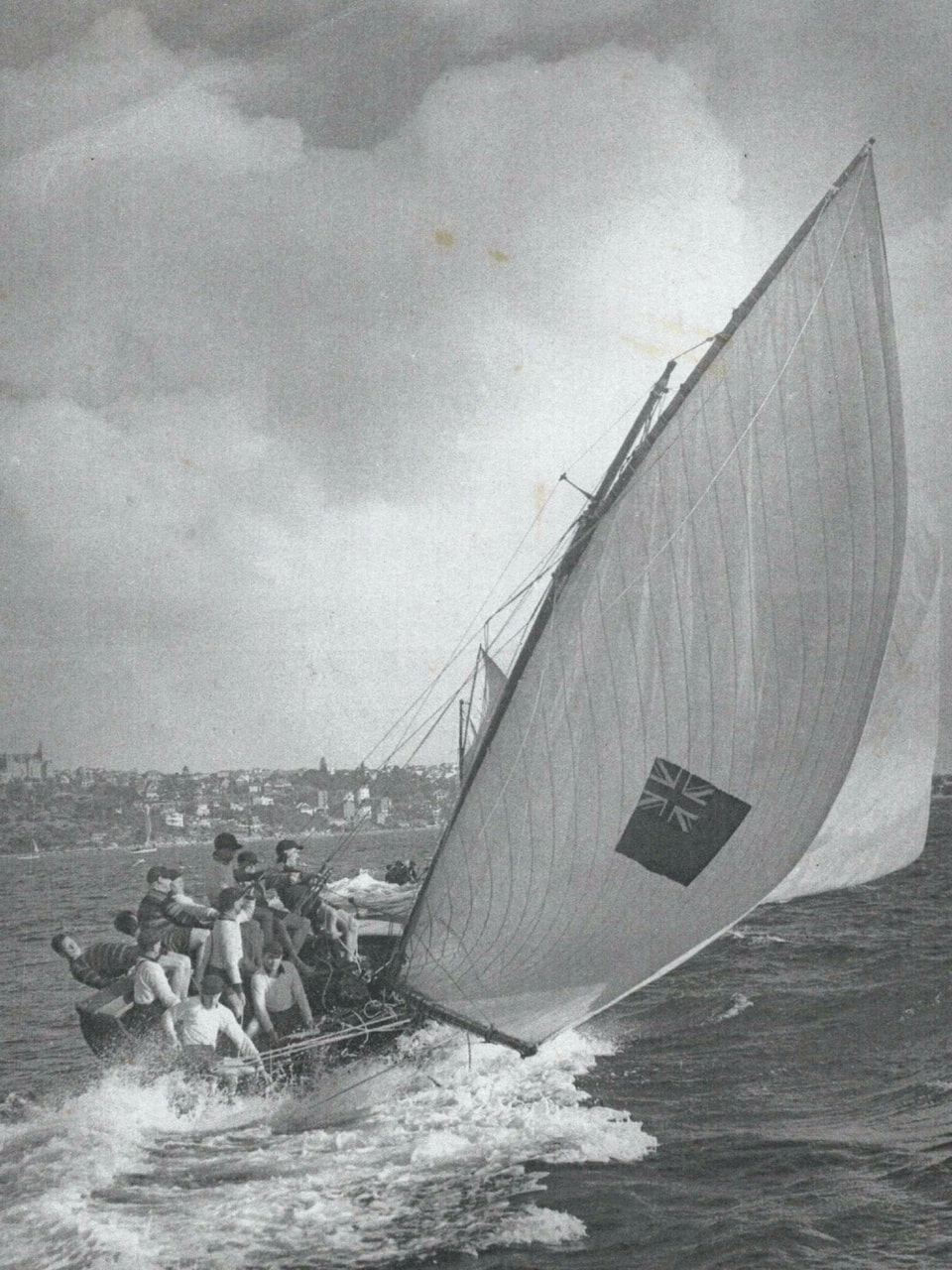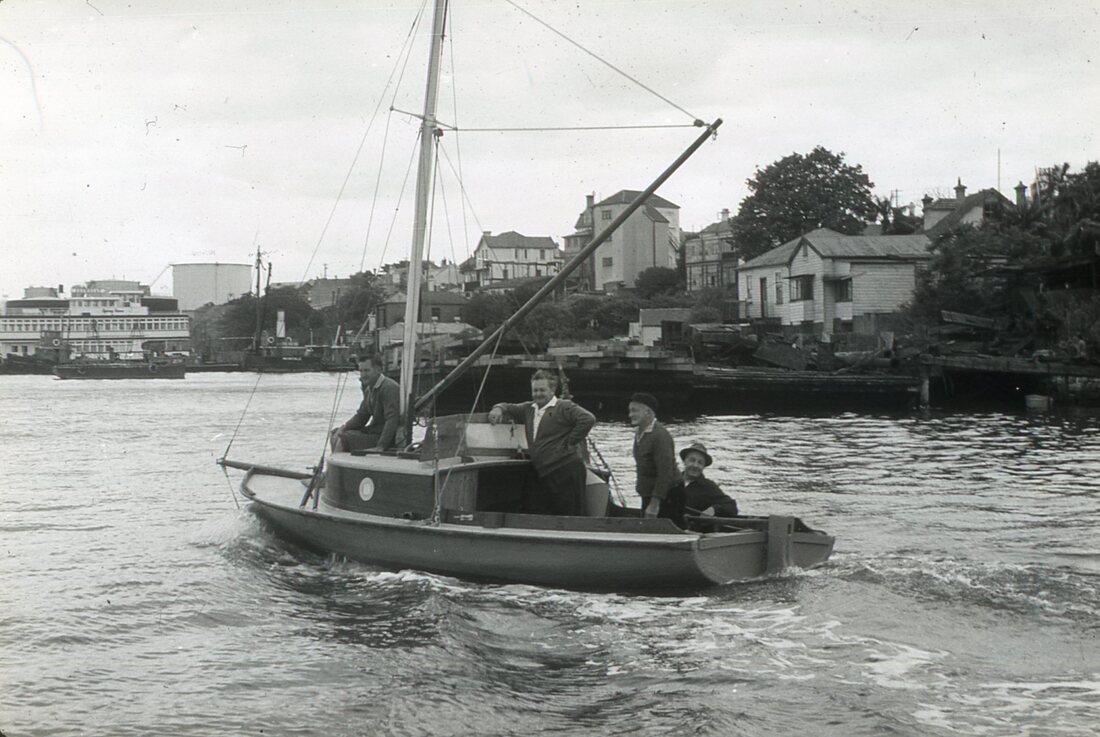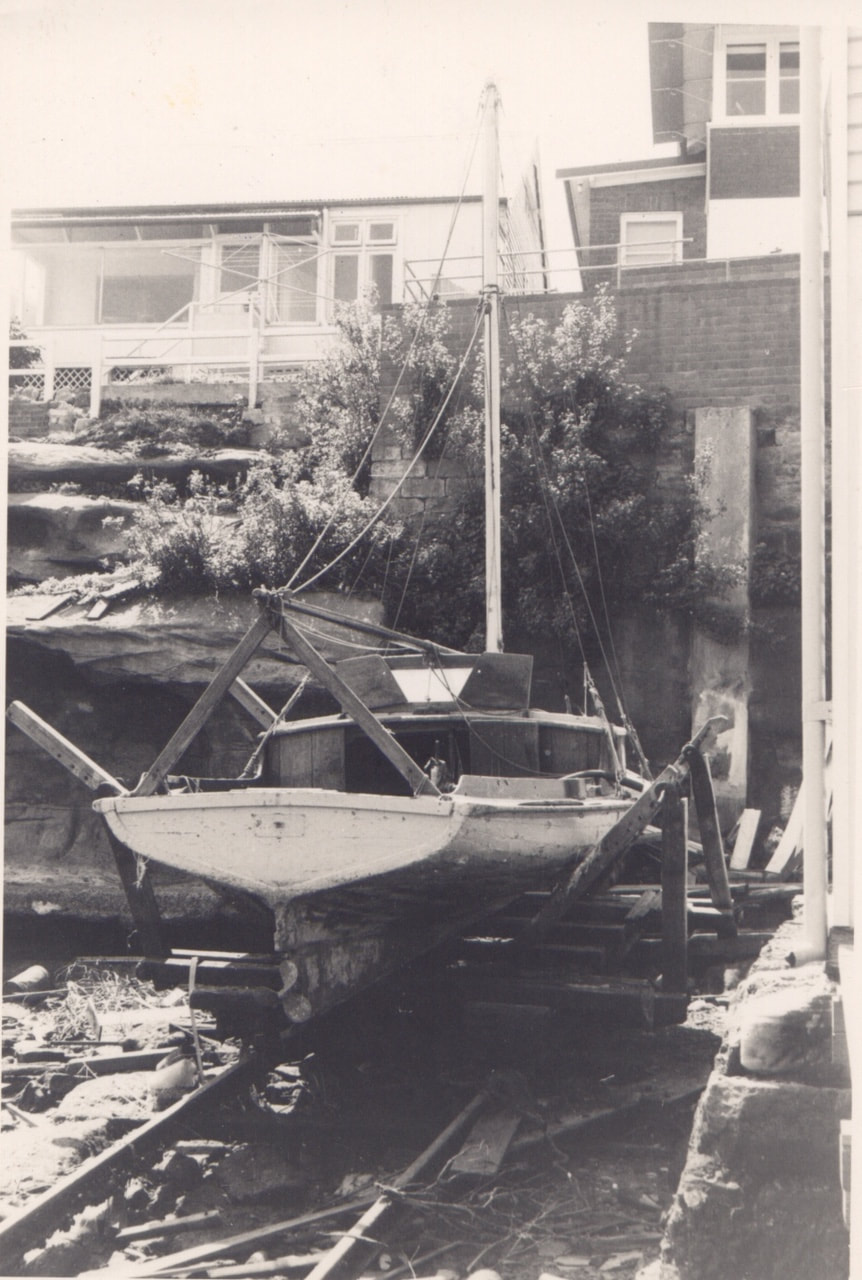The book THE 18-FOOTER BRITANNIA: 100YEARS OF A SYDNEY ICON is now available. The book tells the whole story of the Mighty Britannia and the people around her. This page is a brief summary. The book is crammed with rarely-seen images from private collections of the Robinson family and crew members. You can order your copy on the BOOKS Page, or pickup off the shelf at Boat Books in Crows Nest in Sydney.
The video CENTENARY OF 18-FOOTER BRITANNIA 1919-2019 is up on the VIDEOS Page
Britannia is Back on Display at the Australian National Maritime Museum
On October 9, members of the Britannia replica crew assisted Museum staff to set up the Number One rig on the original Britannia in the foyer of Wharf Seven in Darling Harbour. Get down there for a close-up look at the 100 year-old icon of eighteen-footer sailing.
These shots by Phil Moore and Ian Smith show the Britannia replica crew getting ready to move the boat from the storage area, lacing the cotton mainsail to the boom and gaff, and hauling up the main. No problem for a team that does it every Summer Saturday. In the background you may see the Red Anchor of the other restored Sydney 18-footer Yendys , belonging to the Sydney Heritage Fleet. Britannia and Yendys were close rivals for a couple of decades up until the early 1940's. The two boats haven't been this close since then. Having the two boats together gives the chance for a good look at what the iconic 18-footers of the first half of the twentieth century were like. Yendys was restored by George McGoogan and apprentices at Cockatoo island Dockyard in the early 1980's, but only the keel and tuck remain from the original boat. She sailed several times in 1983 but was then donated to the Sydney Heritage Fleet with a caveat of not going back in the water. Britannia was restored purely for display around 1990, with the guiding principle being retaining as much of the original fabric as possible. This allows us to have the original as a reference, and Ian Smith's authentic replica launched in 2002 allows us to see how the boat performs without risking the valuable original.
Britannia's first race was on Saturday 8 November 1919, she is seen here at the left. It was the State Championship, and Britannia came a very creditable fourth. The winner was Scot, far right. From Bob Lundie's scrap book, Sydney Flying Squadron.
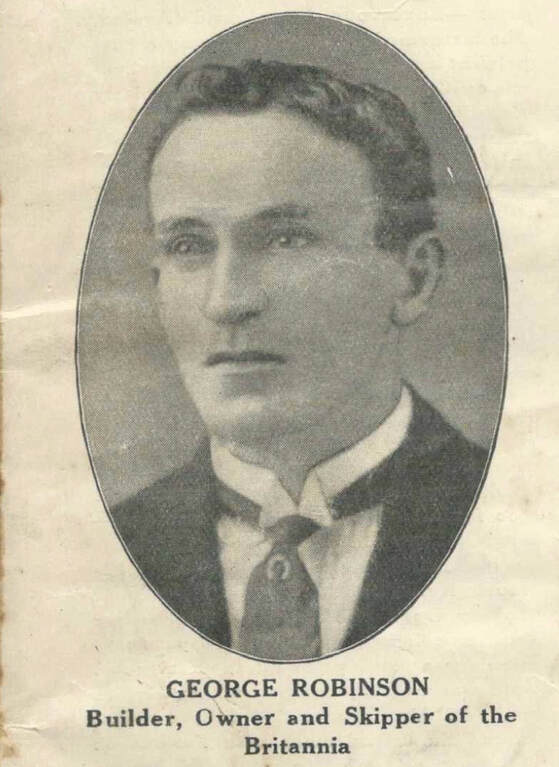
"Wee Georgie" Robinson (1894-1987), builder, owner and skipper of Britannia for her entire racing career of 25 seasons. George was a shipwright by trade and was a first-grade footballer, playing half-back for the Balmain Tigers Rugby League team. He stuck with both sailing (and the Sydney Flying Squadron) and football (and the Balmain Tigers) all his life, becoming the SFS starter for 28 seasons after he retired from sailing, and going on to be a referee and coach of the under-21's team for many years. From a 1919 sailing programme.

George and friend and dog alongside his six-footer, also called Britannia. George and Britannia were the Balmain Dingy Club's Champions for three years in a row during the First World War. Being a shipwright, George was in a restricted occupation and couldn't join up. ANMM.
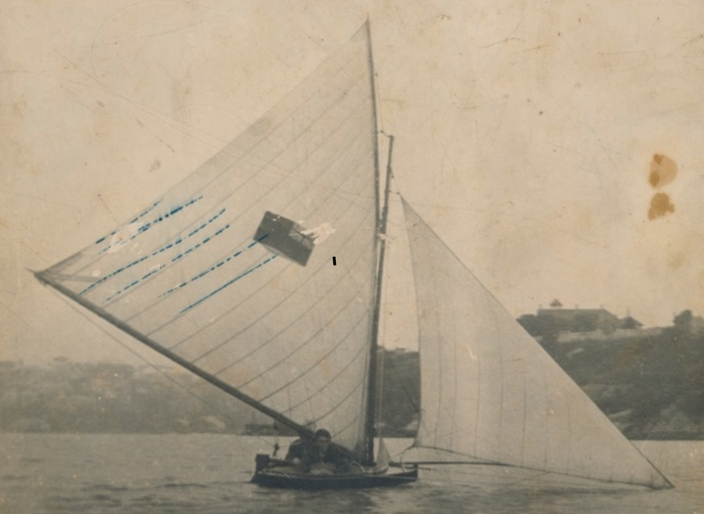
The Six-footer Britannia sailing. Six-footers were the smallest of the open boat classes, and were mostly built and sailed by youths and young adults. Crew was usually two but sometimes three. Note the skirt across the foredeck suspended from the mast, a likely fruitless attempt to keep water out of the boat. More info on the SIX-FOOTERS Page on this website.
Photo from the Alf Appleton Collection, Australian Historical Sailing Association.
Photo from the Alf Appleton Collection, Australian Historical Sailing Association.
This is the medal presented to George for his first Balmain Dingy Sailing Club Championship win in the 1916-17 series. It is only 1 1/2" (38mm) high. It has been donated to the Sydney Flying Squadron by Christina and Keith Miller whose grandmother, a contemporary of Wee Georgie, had it, and we don't know why.
The Robinsons were a sailing family. George's father Jack Robinson was a leading 18-footer skipper, most recently with Livonia*, which he built in 1908 and sold to Watty Ford* who sent her to the Islands in 1914. I'm sure George would have been in the crew at least some of the time. Hall Collection, ANMM.
A classic shot of Britannia from the Hall Collection, ANMM.
Another great shot from the Hall Collection, ANMM. This is Britannia's early big rig, about 700 sq ft in main and jib.
Britannia is just in front of Zephyr in this shot from the Bob Lundie Collection, SFS. This race was on 29 November 1941, and was held in a black nor'easter which reached 40 knots. Britannia finished fourth. This race was one of the last to be held on the Harbour for a few years as a few weeks later war was declared with Japan and the 18-footer fleets moved up River to race for the duration of the War.
Racing downwind with everything up in the late 1930's. The ringtail is the later triangular-headed version. See WHAT'S A RINGTAIL? Page oaths website. Bob Lundie collection, SFS.
Britannia with ballooner set on the reach between Shark and Clark Islands on what looks to be a wet day. Photo from Australian Motor Boat and Yachting Magazine February 1926.
Britannia's cups and pennants on display. The only legible one is the central pennant for winning the SFS Club Championship in the 1929-30 season, the first big Championship won. Read all about this Championship on the YARNS Page in Wee Georgie Robinson versus Chris Webb. Bob Lundie collection, SFS.
A great shot showing the power of these boats. I used this shot on the cover of the The Open Boat book. Hall photo in author's collection.
Britannia's last racing season was 1943-44. George sailed Aberdare for a couple of seasons and then retired. He put a motor in Britannia and in his own words volunteered to be the SFS starter using the boat on a temporary basis, a situation which lasted for 28 years! This photo shows Britannia in November 1962 when performing the role of the rescue boat for the Snails Bay Sabot Club. George is standing up in front of the tiller, ahead of him is Eddie Isberg, seated to Starboard is Stan Reeves. The man on the foredeck is unknown at this point. Photo Gil Wahlquist.
Britannia pulled up on a slip towards the end of her working life. As well as the cabin, a large skeg had been added below the keel. The deck was largely unaltered. Bob Lundie collection, SFS/
Wee Georgie began to restore the boat to display condition in the 1980's but had not completed it when he died in 1987. A friend, Arthur Griffiths continued the work but died relatively soon after starting. Author Bruce Stannard, the pioneer of 18-footer research convinced the new Australian National Maritime Museum of the vessel's significance and the Museum purchased the boat from Bob Lundie to whom George had left it, and Britannia was magnificently restored for display by Mike Staples, Rick Wood and Nigel Shannon and was proudly displayed from the Museum's opening in 1990 until 2016. As I reported earlier, she is now back on display in the foyer of Wharf 7 Darling Harbour. Read the whole story in the book THE 18-FOOTER BRITANNIA: 100 YEARS OF A SYDNEY ICON.
Wee Georgie with Neville Wran and footballer Wayne Pearce at the Centenary of the Nicholson St School in Balmain in the 1980's, all ex-pupils. I know Balmain boys don't cry but they sure can laugh!
A Centenary Dinner was held at the Sydney Flying Squadron on the exact Centenary date of her first race, 8 November, attended by several relatives of Wee Georgie, and the SFS Historical 18-footer replicas raced on Saturday 9 November for the Britannia Centenary Cup with the family among those watching from the spectator ferry. The race was won by Scot, with Britannia third. This was quite fitting as in Britannia's first race in 1919 she came fourth, and it was won by the original Scot.
A Centenary Dinner was held at the Sydney Flying Squadron on the exact Centenary date of her first race, 8 November, attended by several relatives of Wee Georgie, and the SFS Historical 18-footer replicas raced on Saturday 9 November for the Britannia Centenary Cup with the family among those watching from the spectator ferry. The race was won by Scot, with Britannia third. This was quite fitting as in Britannia's first race in 1919 she came fourth, and it was won by the original Scot.


